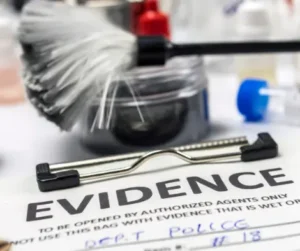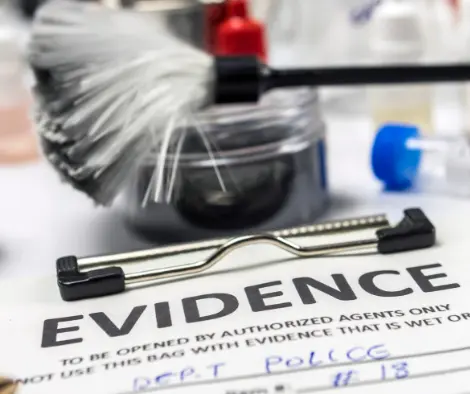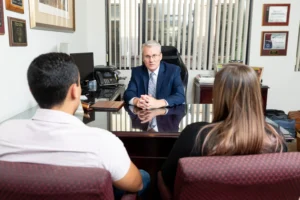

Forensic Evidence: The Silent Witness in Criminal Investigations
Imagine walking into a crime scene. There are no eyewitnesses, no security cameras, and no clear suspects. At first glance, it may seem impossible to solve the crime. But every crime scene holds a silent witness—forensic evidence. Unlike human testimony, forensic evidence does not lie, forget, or change its story. It provides objective, scientific proof that can link a suspect to a crime or exonerate an innocent person.
Over the years, forensic science has revolutionized criminal investigations. With advancements in technology, investigators can uncover microscopic traces of evidence that were once undetectable. From DNA profiling to fingerprint analysis, forensic techniques play a crucial role in modern justice.
Forensic Analysis: Uncovering the Truth
Forensic analysis is the scientific examination of physical evidence to reconstruct events and identify those involved in a crime. The process involves multiple disciplines, each providing unique insights.
Types of Forensic Analysis
DNA Analysis
DNA is the gold standard in forensic science. Even the smallest trace—such as a strand of hair, a drop of blood, or a skin cell—can reveal a person’s identity with astonishing accuracy. The introduction of DNA evidence has led to the exoneration of 375 wrongfully convicted individuals in the U.S. through organizations like the Innocence Project.
Fingerprint Examination
Each person’s fingerprints are unique, making them a powerful tool in linking suspects to crime scenes. Investigators use fingerprint analysis to compare latent prints found on surfaces with those in criminal databases.
Ballistics and Firearm Analysis
When a gun is fired, it leaves distinctive marks on bullets and casings. Forensic experts match these patterns to specific weapons, helping to determine if a firearm was used in a crime.
Toxicology Reports
Toxicologists analyze bodily fluids for drugs, alcohol, and poisons. These reports are often critical in DUI cases, poisonings, and overdose investigations.
Forensic Entomology
Yes, even insects can tell a story. Forensic entomologists study insect activity on decomposing bodies to estimate the time of death, which can help establish a suspect’s timeline.
Each form of forensic analysis provides a puzzle piece that, when put together, reveals a more complete picture of the crime.
Evidence Admissibility: What Makes Evidence Valid in Court?
For forensic evidence to be useful, it must be admissible in court. Judges and attorneys rely on legal standards to determine whether scientific evidence can be presented to a jury.
The Legal Standards for Evidence Admissibility
The Frye Standard
Established in 1923, the Frye Standard states that scientific evidence is admissible only if it is widely accepted by the scientific community. This ensures that unreliable or experimental techniques do not influence trials.
The Daubert Standard
In 1993, the U.S. Supreme Court introduced the Daubert Standard, which provides a more flexible approach. Under Daubert, evidence must meet these criteria:
- It must be testable and falsifiable.
- It must have been peer-reviewed.
- It must have a known error rate.
- It must be accepted by relevant scientific experts.
Both standards aim to prevent junk science from misleading juries and causing wrongful convictions.
Case Study: The Role of Forensic Evidence in Exonerating an Innocent Man
To understand how forensic evidence can impact real cases, let’s examine the case of Kirk Bloodsworth, the first American on death row to be exonerated by DNA evidence.
The Crime and Conviction
In 1984, a young girl was found murdered in Maryland. Based on an eyewitness account, police arrested Kirk Bloodsworth, a former Marine with no prior criminal record. Despite his insistence on innocence, Bloodsworth was convicted of first-degree murder and sentenced to death.
The Forensic Breakthrough
Nine years later, as forensic DNA testing became more advanced, Bloodsworth’s legal team pushed for the evidence to be reexamined. A sample of semen found at the crime scene was tested, and the results proved that the DNA did not match Bloodsworth.
The Outcome
In 1993, after spending almost a decade behind bars, Bloodsworth was exonerated. His case led to major criminal justice reforms, including better standards for evidence preservation and the expansion of DNA databases.
Bloodsworth’s story is a powerful reminder that forensic evidence can save lives—not just by convicting the guilty but by protecting the innocent.
Challenges and Controversies in Forensic Science
While forensic evidence is a powerful tool, it is not infallible. Several challenges must be addressed to ensure its reliability.
Human Error and Misconduct
Not all forensic techniques are foolproof. A 2016 report from the National Academy of Sciences found that some forensic disciplines, including bite-mark analysis and hair comparison, have led to wrongful convictions due to subjective interpretations.
Evidence Contamination
If forensic samples are mishandled, they can become contaminated. This can lead to false positives or inconclusive results.
Bias in Forensic Analysis
Some experts argue that forensic analysts can be influenced by confirmation bias, where they unintentionally interpret results in favor of law enforcement.
To combat these issues, forensic labs must follow strict quality control measures and maintain independent oversight.
Conclusion
Forensic evidence is the silent witness that speaks through science. It has the power to convict the guilty, free the innocent, and uncover the truth hidden within a crime scene. But like any tool, its reliability depends on how it is collected, analyzed, and presented in court. As forensic science continues to evolve, so too does our ability to seek justice with greater accuracy and fairness.
Frequently Asked Questions (FAQs)
- Can forensic evidence be wrong?
Yes. Errors in collection, contamination, or biased interpretations can lead to incorrect conclusions. That’s why forensic evidence should always be corroborated with additional proof. - How reliable is DNA evidence?
DNA evidence is highly reliable, with accuracy rates over 99%. However, it can still be misinterpreted or contaminated, which is why proper procedures must be followed. - Can forensic evidence be thrown out in court?
Yes. If evidence is collected improperly or does not meet admissibility standards (like the Daubert or Frye rules), a judge may exclude it from the trial. - What happens if new forensic evidence proves someone’s innocence?
If new forensic analysis contradicts a conviction, it can lead to appeals, post-conviction relief, or even exoneration, as seen in many wrongful conviction cases. - Is forensic evidence always necessary to convict someone?
No. While forensic evidence strengthens a case, convictions can also be based on witness testimony, confessions, and circumstantial evidence.


